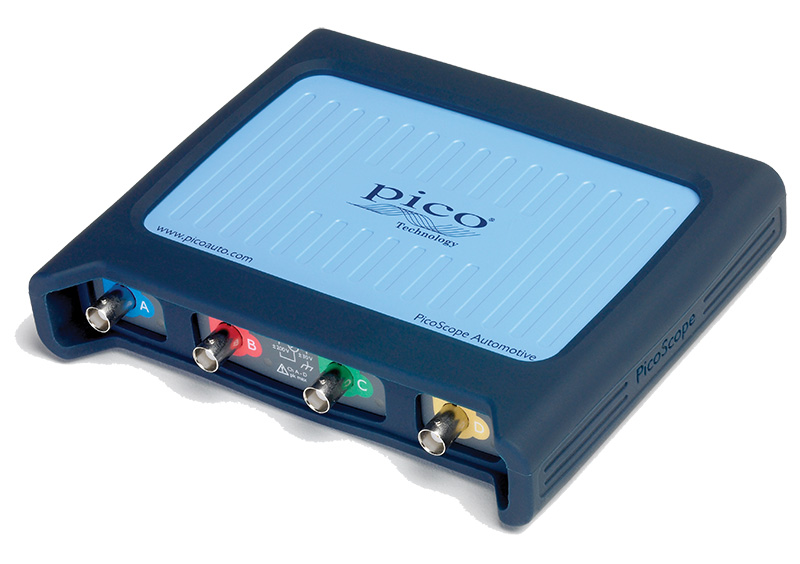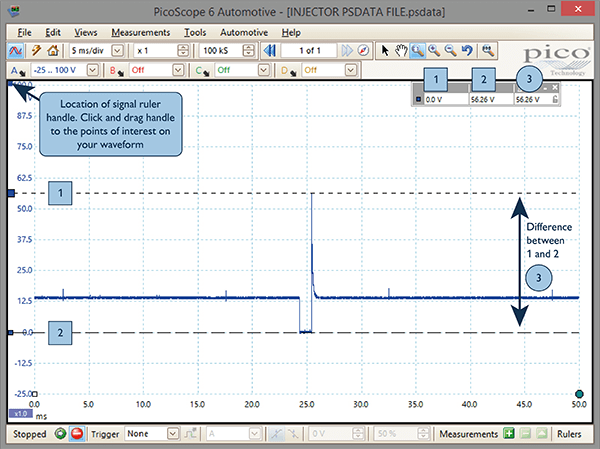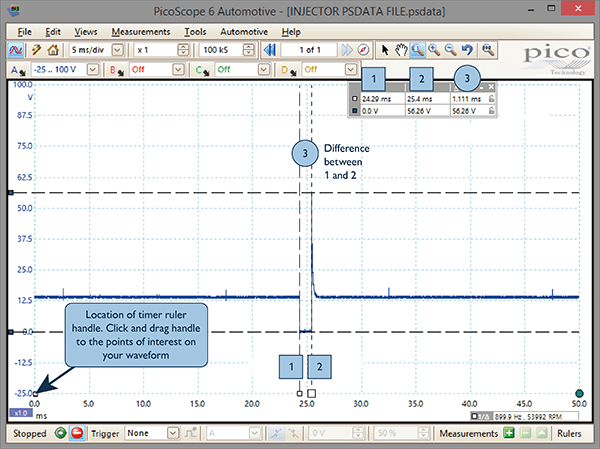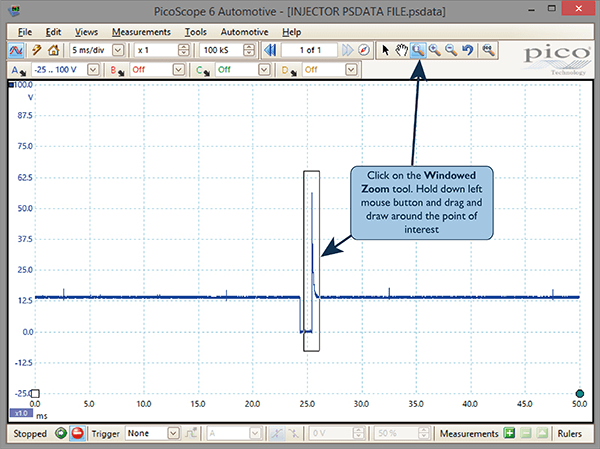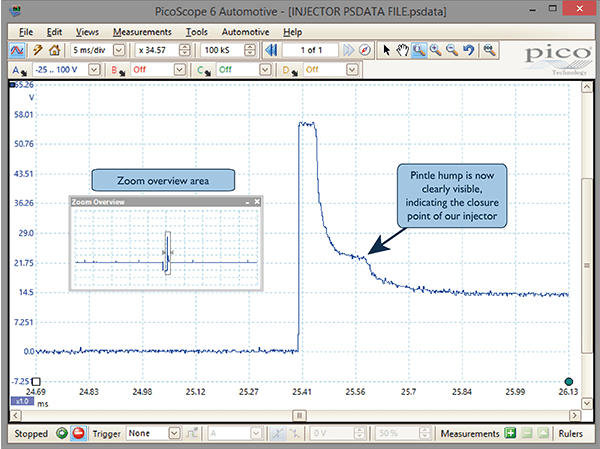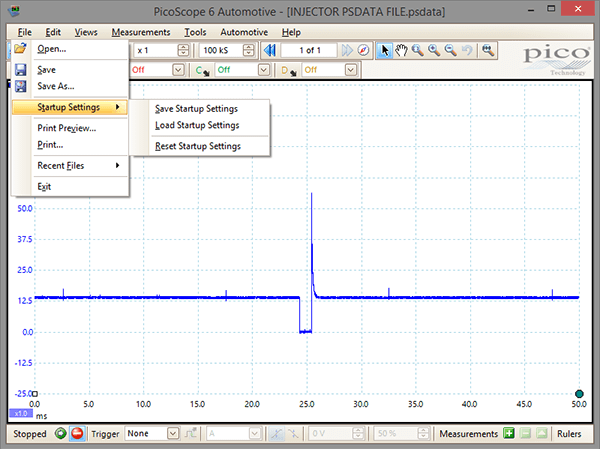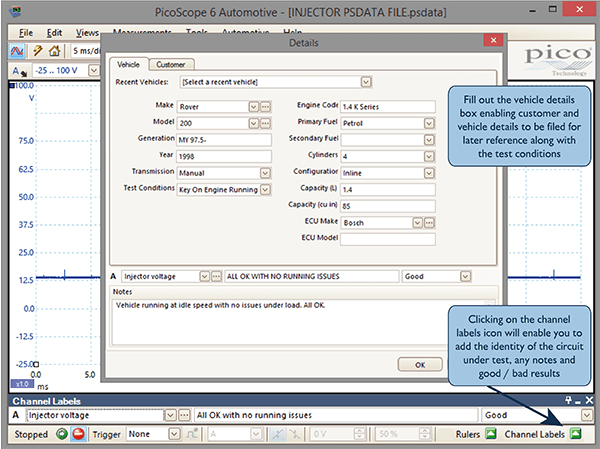Scope School Part 2 - The Next Step
Introduction
You may have experimented with the various techniques we covered when capturing waveforms (Scope School Part 1).
The features of PicoScope that we covered included the Home and Auto icons and the Automotive presets menu.
We also covered the all-important key elements when going it alone and capturing a waveform from scratch: Voltage, Time, Trigger, and Probe.
I have to say that as a new user to PicoScope, with all the scope features available, the Automotive presets menu are a godsend, so don’t panic. With this knowledge in place you can now move onto further valuable features of PicoScope that will make life so much easier as your experience and confidence grows.
Now that you’ve made that all important capture, your job is to evaluate the waveform and to look for the information contained within. Often at a glance the waveform may look perfectly normal, but analysis is the key to a successful diagnosis and here you will need to Measure and Zoom specific areas of interest within the waveform to reveal the hidden detail.
In this example we use a 12V injector, but the theory behind the tools and their use applies to any signal you capture.
Rulers
You have at your disposal numerous Signal Rulers that will enable you to measure the minimum and maximum values of all waveforms on screen.
The image demonstrates the minimum and maximum values of a 12V injector waveform using the Channel A signal rulers.
Click on the signal ruler handle adjacent to the top of your vertical scale and drag down to the location of interest within your waveform; repeat this process to get your minimum and maximum value positions.
The numerical value of the position of the signal rulers on the screen will be displayed in the Ruler Legend at the top of your scope screen.
Each channel has its own set of signal rulers available.
You also have a set of Time Rulers to enable you to measure the time of an event within your capture accurately.
Click on the white time ruler handle located at the bottom left corner of your scope screen and drag to the start point of interest within your waveform; place a second time ruler at the end point of your area of interest.
The numerical value of the position of the time rulers on the screen will be displayed in the Ruler Legend at the top of your scope screen.
Zooming
Often, the ultimate revelation comes from Zooming into your captured waveform at the point of interest. At first that which appears to be irrelevant, could be revealed upon zooming to be the source of the problem.
Remember that when zoomed in you can also use the measuring tools previously mentioned to evaluate further the area of concern.
PicoScope has numerous zoom options and we will cover the most popular function here. The Windowed Zoom tool is located in the zoom tool bar; simply click on the icon, then move your mouse onto the scope screen.
Hold down the left mouse button whilst you drag and draw a box around the area of interest within your waveform. Upon releasing the mouse button, the zoom function will enlarge the waveform to show only the area where you drew the zoom box.
Viewing the first Figure screen capture with no zoom, we are missing a vital piece of information as we cannot see the injector pintle hump formed when the injector pintle passes through the solenoid winding core on closure, disrupting the magnet field on the way.
In the second Figure, we can see our injector waveform from the first Figure, but now zoomed into the area of interest revealing the point of closure of our injector. You’ll also notice the Zoom Overview window that appears on screen explaining exactly where you are zoomed into with reference to the whole waveform.
Custom Start-up Settings
In our previous ‘Scope School’ feature, we mentioned having your own predetermined startup settings. These settings will be linked to the Home button within PicoScope, and will be the settings that appear when you open the software.
Firstly, let’s tackle the question of why you would need this feature. Perhaps you regularly use PicoScope for a specific test, one that doesn’t appear in our Automotive menu library. Your test may require several channels to be active with differing input ranges, a complicated trigger, and perhaps even an alarm function (more on these next time!). To set up this test every time you want to capture signals may be time-consuming and probably quite frustrating.
To use this feature, simply set up the test as you normally would, but rather than run the test, choose File > Startup Settings > Save Startup Settings. Now, each time you open PicoScope or click the Home button, your custom settings will be ready to go.
To reset the Startup Settings to default, choose File > Startup Settings > Reset Startup Settings.
Saving & Sharing
Possibly one of the most simple and beautiful features of PicoScope is the Save facility allowing you to capture all your PicoScope files (or should I say hard work).
Whilst this seems a simple feature, the possibilities that then open up are invaluable. With your captures saved, you then have:
- a hard copy for your customer;
- a reference for your own knowledge base;
- a comparison waveform (more on this next time);
- the ability to share with colleagues anywhere in the world;
- the ability to include waveforms in technical reports; and
- the ability to analyze and amend waveforms long after capture
Using the Save and Save As features will enable you to save your capture with all the relevant information about your vehicle, the test conditions under which your capture was taken and any notes you choose to include about your capture that will become a lifesaver when reviewing files many months later.
With all of the above, you now have the knowledge from Part 1 of Scope School to capture a variety of waveforms with or without the use of the Automotive presets as well as the tools above to analyze and save waveforms for future reference.
In Part 3, we will look at a number of advanced features that include reference waveforms, scaling, alarms, memory buffers, scope input coupling and rotation markers.

